
Even though Auburn itself became a victim of the Depression, its timeless beauty transcends the challenging mood of those times. Then, now, and always. The sun always shines on an Auburn Boattail Speedster.
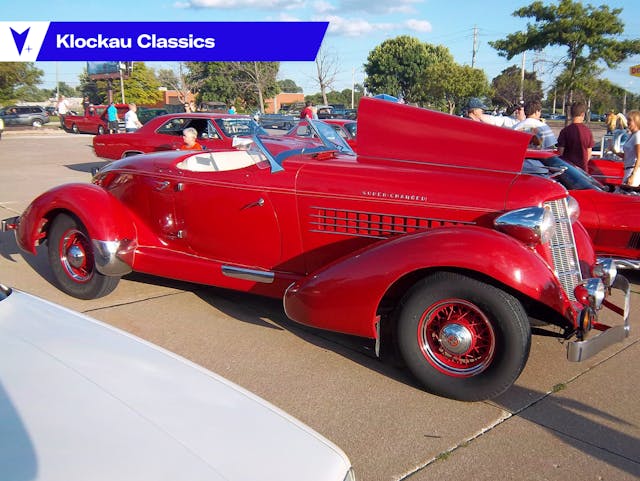
As we finally begin the car show season across the Midwest, I can’t help but think about this capital-C Classic Auburn Boattail Speedster that I captured on a beautiful warm fall evening back in October 2013.

Even though Auburn itself became a victim of the Depression, its timeless beauty transcends the challenging mood of those times. Then, now, and always. The sun always shines on an Auburn Boattail Speedster.
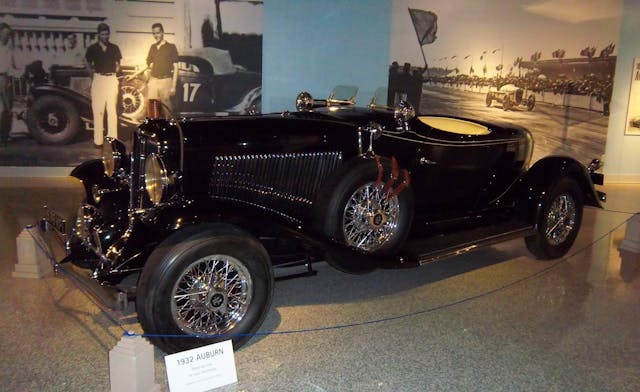
Indiana has a rich automotive history. Studebaker Corporation and International Harvester may have been longer-lived, but the Auburn Automobile Company, later home to the storied Cord and Duesenberg marques, is perhaps the most famous and had the most consistently beautiful cars. Certainly the most remarkable Auburn was the lovely boattail Speedster.
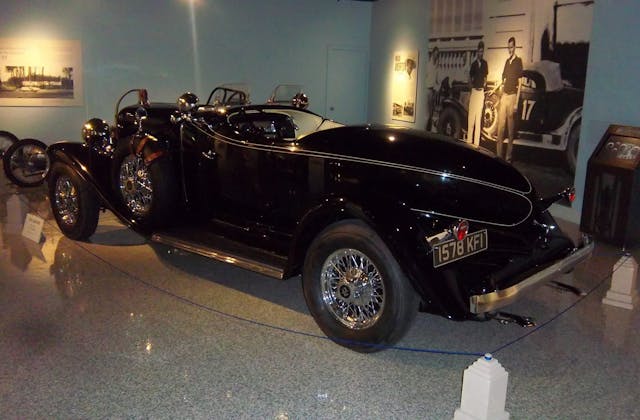
The sporty Speedster first came on the scene in 1928 and was a pleasant break from the rather staid Auburn sedans of just a few years earlier. Not only did its light body result in 100+ mph, it was beautiful to boot, with its lovely lines. It was all thanks to E.L. Cord, who found himself in charge of a near-bankrupt car company.

Thanks to his eye for style, he turned lemons into lemonade when he ordered 700 unsold black Auburn sedans and had them repainted in bright, eye-catching colors. Once those cars were gone, Cord kept the momentum going with cars like the Speedster. Style and flair sold, and Cord knew it.
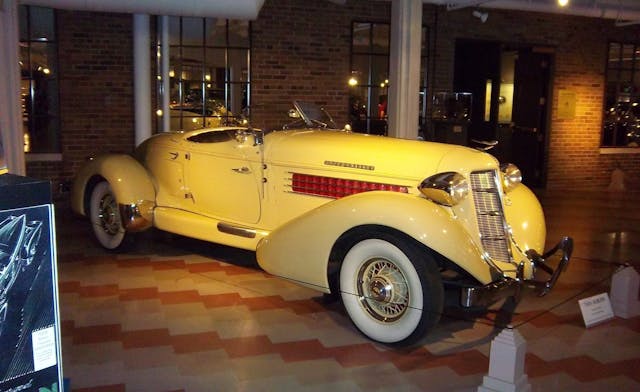
The Speedster was a real showroom draw and would remain a vital (albeit low production) part of Auburn’s lineup. That meant a complete re-do for the 1935 model year. The Speedster was given much more voluptuous lines, courtesy of Gordon Buehrig, who would later on style the equally snazzy Cord 810/812. Interestingly, the car was not totally new, and in fact used the 1934 Speedster body. Thanks to Buehrig’s swoopy restyle with the streamlined nose and pontoon fenders, however, it was not readily apparent.
The 1935 851 Speedster was powered by a flathead, side-valve straight eight with 150 horsepower. Also included was a Schweitzer-Cummins centrifugal supercharger, the critical component in the car’s ability to achieve “the ton.” Indeed, every Speedster was certified as being tested to 100 mph or more before delivery. A plaque on the instrument panel attested to its proven capability. Years later, it was revealed that not every car had been tested; it was more like 20 percent of them. Still, there was no doubt that the Speedster could reach the speeds it boasted about.
Auburn Speedsters have been blue chip collector cars for a long time, but they are not frequently seen outside of giant auctions and various and sundry Concours d’Elegance. I knew about them from an early age, as one of my earliest toy cars, circa 1982, was a yellow Hot Wheels Auburn Speedster with brown fenders and black interior (I also had a Pocket Cars Bugatti Royale). Later on, I got a white one with white fenders. I still have both-somewhere, although the yellow one is—ahem—kind of rough. A lot of my early diecast cars had short, brutal lives, yet many have survived to the present day.
So it was a treat to see this original ’35 at one of the South Park Mall car cruises. It is a show fixture here in my town, though it doesn’t appear very often. In fact,the last time I saw it was probably around 2015.
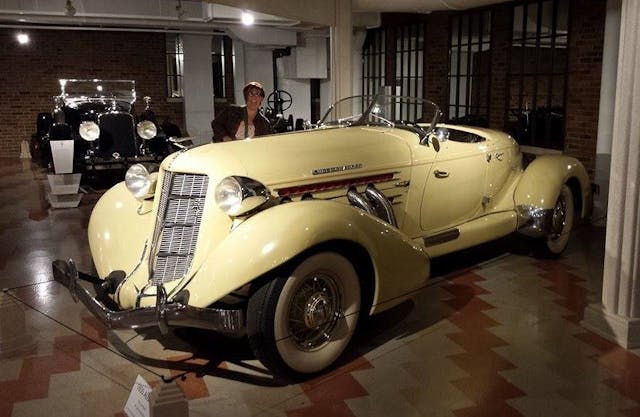
Many a company has offered an Auburn Speedster kit car over the years, but seeing a real one makes most of those kits look like the subpar facsimiles they are. Just like a fake Rolex, it is pretty easy to tell a phony from the original. The biggest giveaways are the more delicate-looking wire wheels, higher ride height, and the interior.
And what an interior! This car has been fitted with ’50s vintage turn signals, as seen here mounted to the left of the steering column. I particularly like the red-over-cream color scheme, and the diamond-pattern dashboard inserts are beautiful. This was not a cheap car in 1935 ($2245, which is $47,500 today), and it shows in the little things. Even the gauges are smoothly styled and attractive. In the depths of the Depression, a sighting of one of these beauties must have seemed a hallucination, like seeing a Ferrari 458 Italia in Monmouth, Illinois, would be today.
And here’s the heart of the matter: that lovely 280-cubic-inch straight eight. I’ve always loved the flexible exhaust pipes snaking out of the hood and disappearing into the running boards. And check out those horns.
Sadly, Auburn was not much longer for this world. ACD was losing money despite its attractive line of cars, and the little-changed 1936 852 Auburn would be the last of the line. Starting in 1937, the Cord 812, along with a handful of stratospherically-priced Duesenbergs, were all that would remain. But Auburn cars live on in the hearts of prewar classic car nuts to this day, and the Speedster, with its long list of speed records and sheer beauty, will never be forgotten.
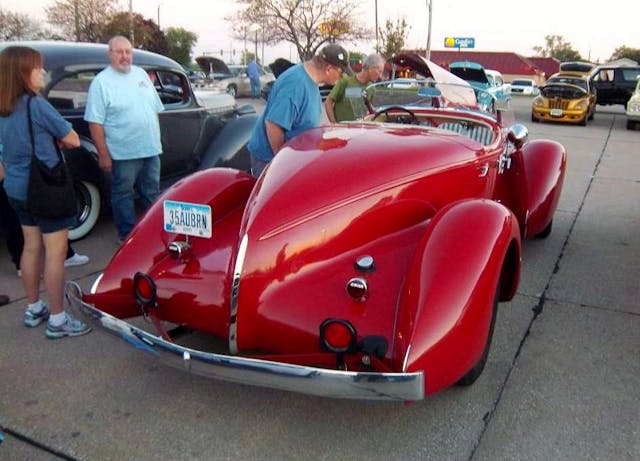
(One final note: The black ’32 and yellow ’35 Speedsters were seen at the fantastic Auburn Cord Duesenberg Museum in Auburn, Indiana, in 2014. If you haven’t visited the museum, please make the trip. It’s an amazing place full of amazing cars.)